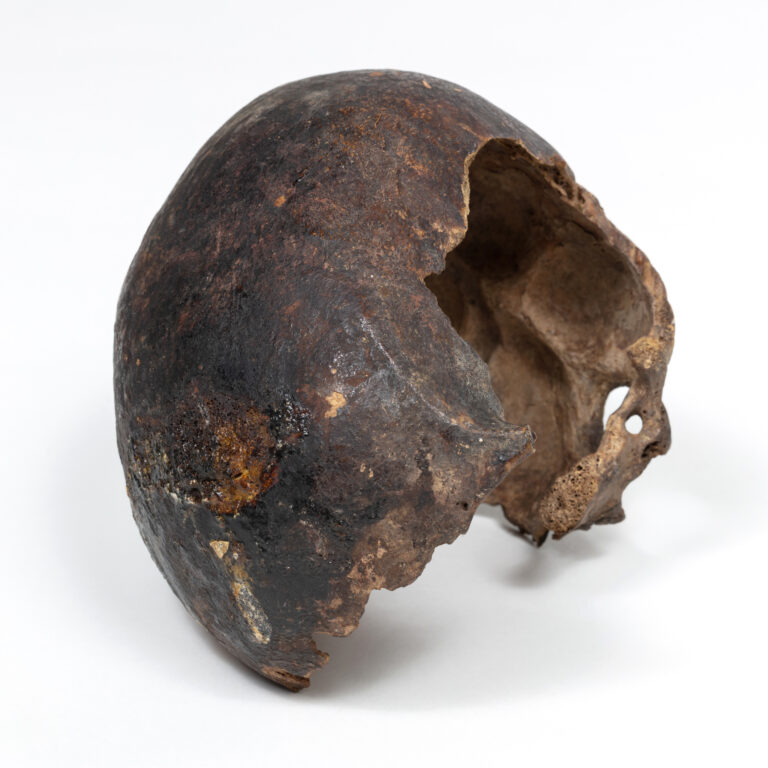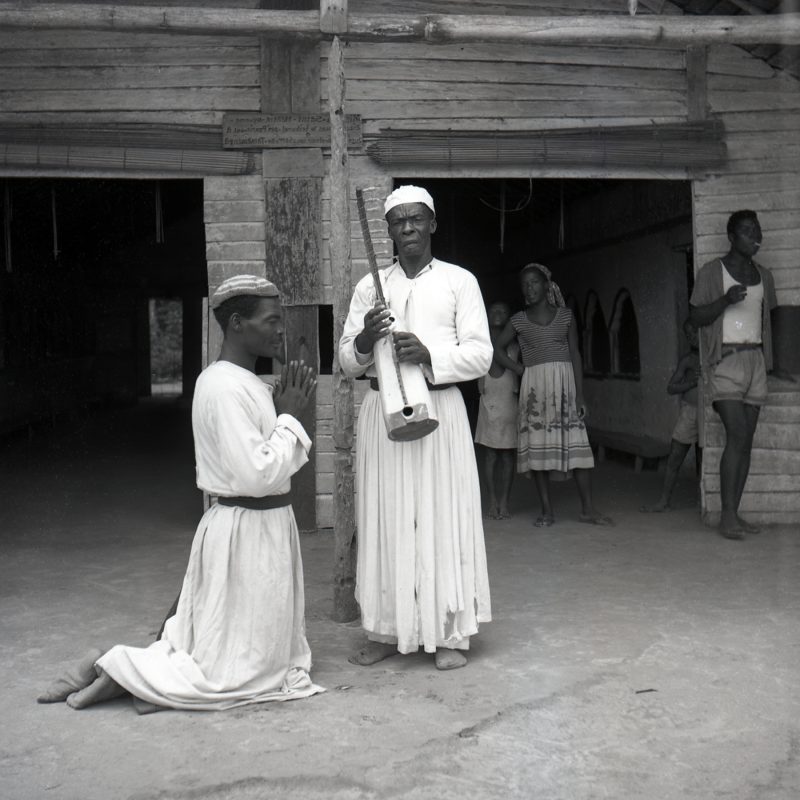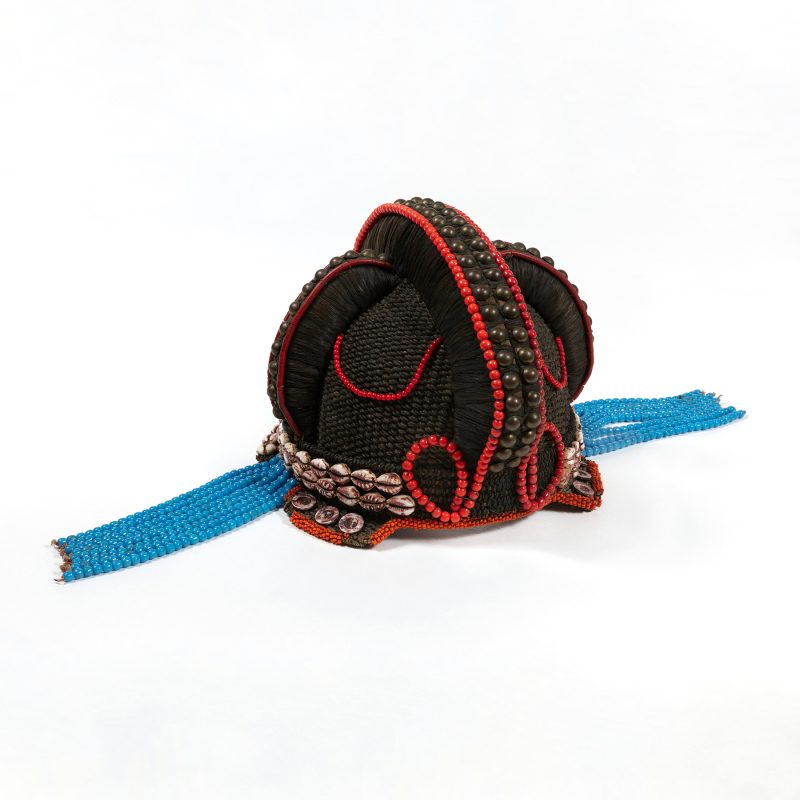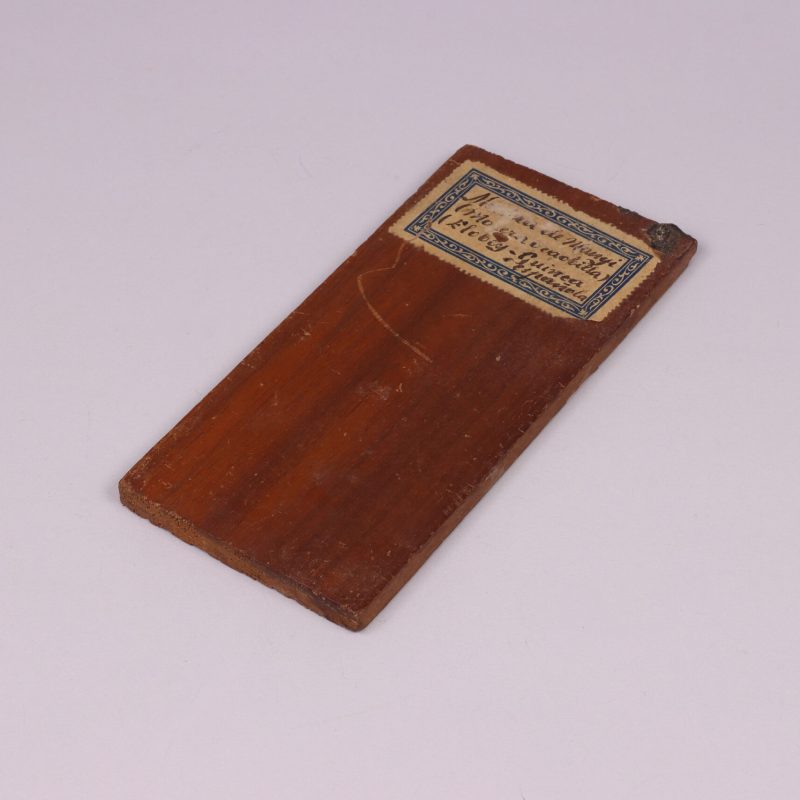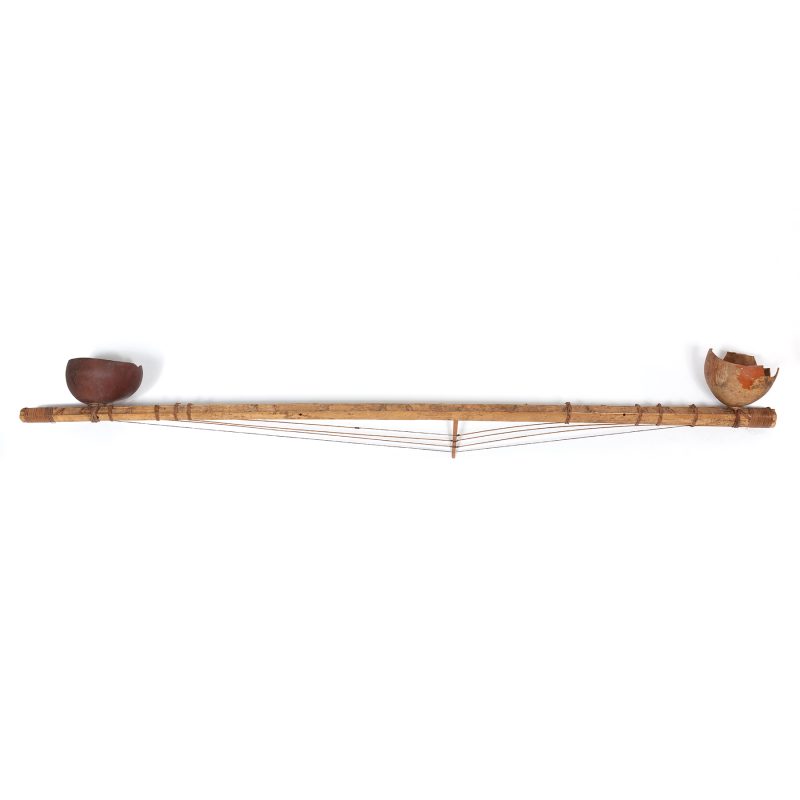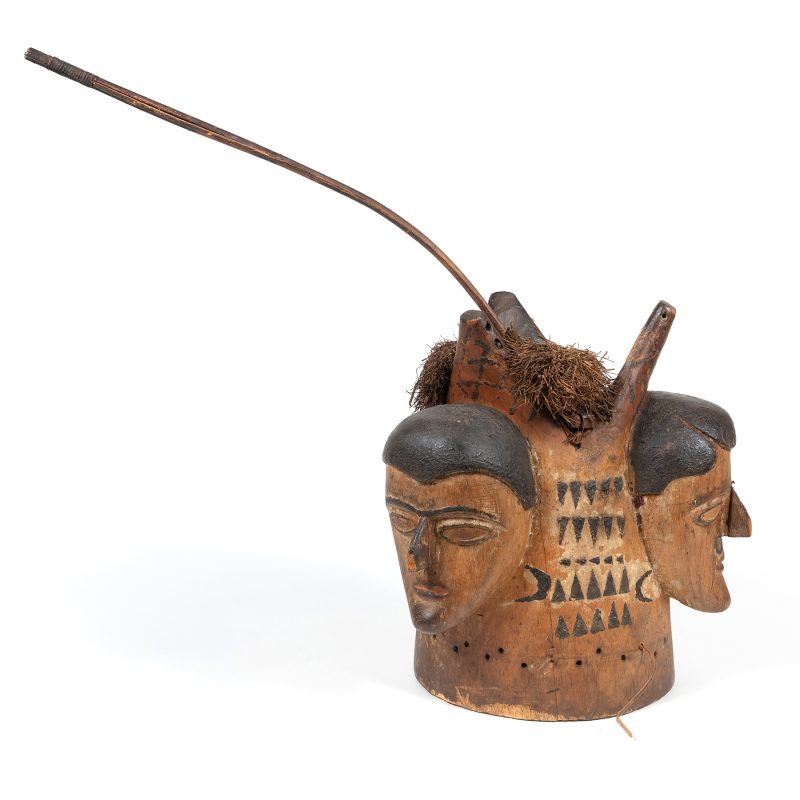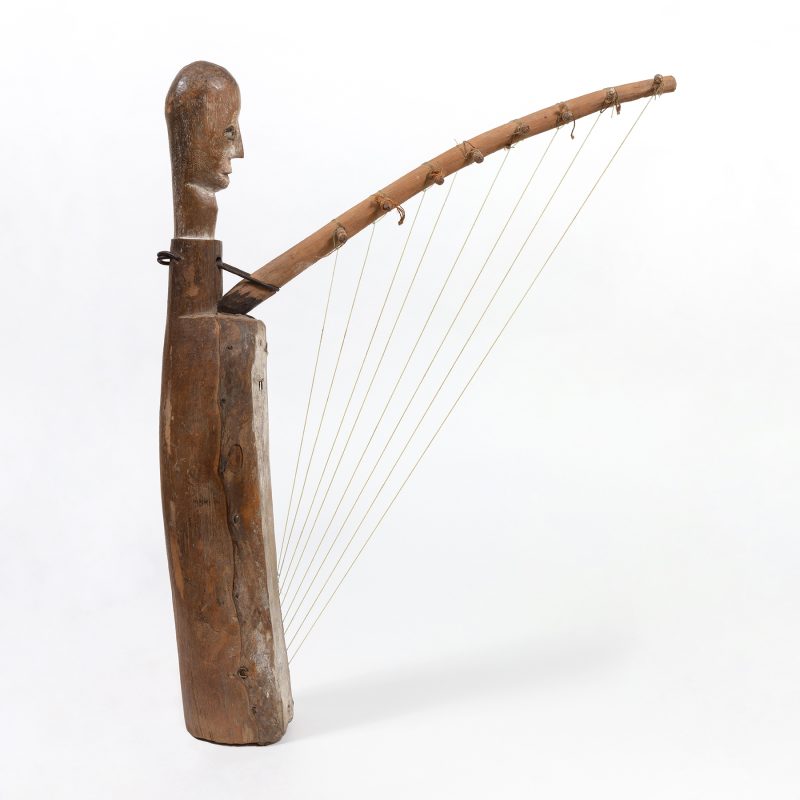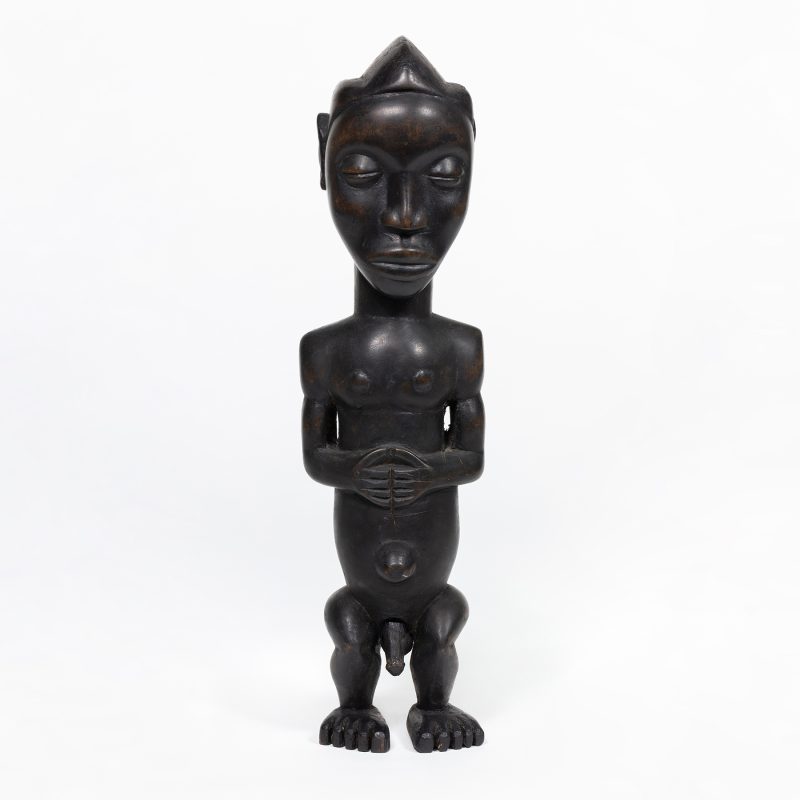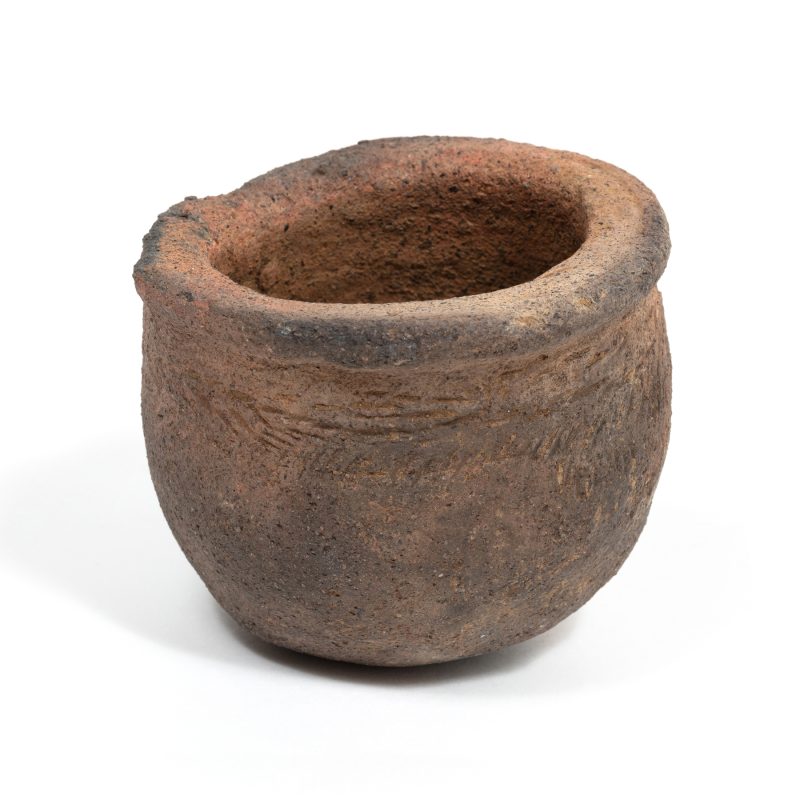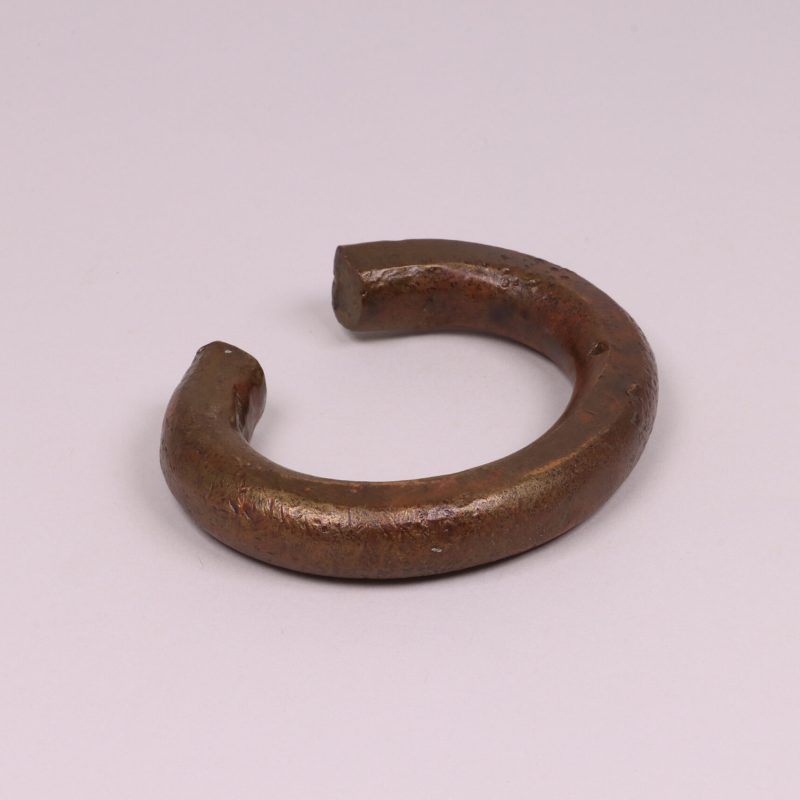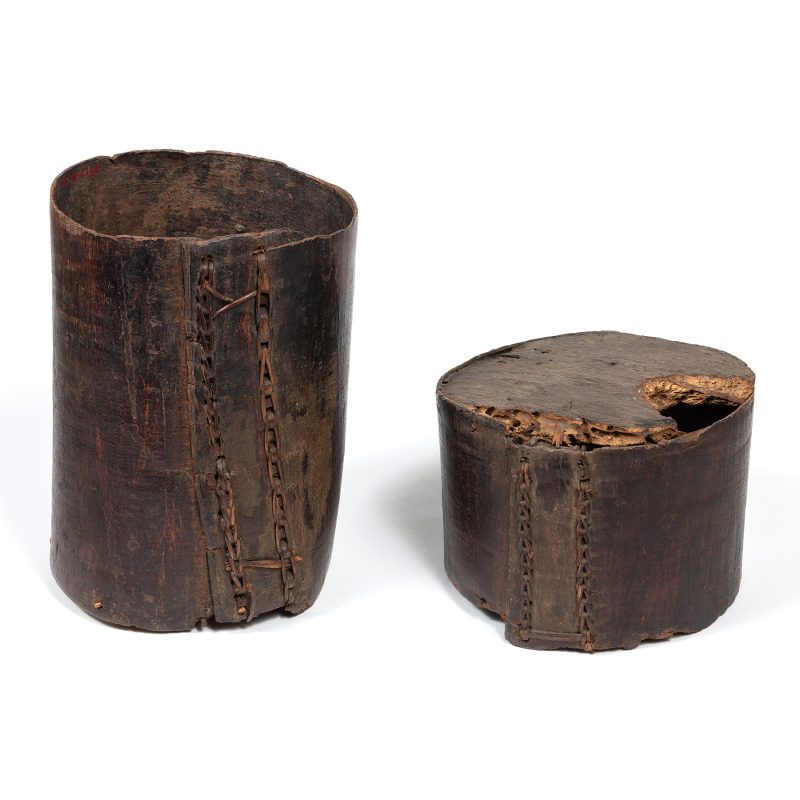Summary of results
This ceremonial cut-out skull is an object associated with the Melan box inventoried by the museum as MEB 17-14, an artefact where the skeletal remains of ancestors were preserved as part of the Melan ceremony, a widespread practice among the Fang before their disappearance in the 1940s. Each lineage preserved the skulls (ekwe-kwe-nlo) and other skeletal remains of their ancestors in a cylindrical reliquary box (nsec-biere) made of wood or andun bark. On top of it was placed a carved figure, commonly known as a biere (although it goes by other names such as ngun-melan, biang-melan, esasaa-melan, nio biere, or nio-Melan), which portrayed the founder of the lineage (Obiang Engonga, n.d.). This ceremonial object served to establish contact with the afterlife through the contained force of the ancestors. The skull of the chosen person had to be removed from the cemetery only after some time after being buried in the forest, and returned to his or her home village, where a person designated by the dead person in their will would take care of it (Ondulo Mangue, 2010). These are two very interesting objects that, according to the inventory, the Museo Etnológico y Colonial (MEC) bought from Jordi Sabater Pi in 1952. Despite the importance of both pieces, the available documentation does not allow us, beyond some approximations, to trace their exact provenance or the time of acquisition.
Chronological reconstruction of provenance
According to the institution’s own inventories, the piece entered the museum on 24 April 1952, and is associated with an acquisition made by Jordi Sabater Pi. It probably comes from a group of twenty-two objects purchased by the museum from Sabater Pi, apparently originating from the 1948 IDEA Expedition to the former Spanish Guinea. In the documentation, there are only two pieces of information that could coincide with these two objects, although neither of them allow us to confirm that they are specifically these objects.
The first piece of inormation is linked to the IDEA Expedition of 1948. In the field notes of 25 June 1948, at 3.15 p.m. (presumably in the afternoon), it is mentioned: ‘monebiang = (idol). House. Medicine. The wooden tube with bones. Skulls, and on top, the idol. With shiny leaves’ (MEB L128 01 12, p. 63). In any case, it cannot be deduced from this that they acquired any Melan boxes with skulls. The various inventories attached to the dossier do not contain any objects of these descriptions.
The second piece of inormation is mentioned by Jordi Sabater Pi in some of the letters he sent to Panyella between 23 March 1952 and 1 March 1954 (Sabater Pi, 1953). In a letter dated 23 March 1953, he tells him about the ceremony of the Ngui cult, ‘the cult of the earthen figure of a Ngui with human skulls to undo spells and kill sorcerers’. As Sabater explains in this letter, it is a ceremony ‘very old and now practically extinct’, which, after many negotiations, ‘an old man from Cameroon, a witchdoctor of the Ngui’ allowed him to attend. He goes on to describe that ‘the basis of this affair is the fire that purifies and the skulls and tibias as a magical force. They are the remains of his family, the thing looks very interesting, and it is all surrounded by a lot of mystery and silence. In another letter dated 19 July 1953, he again spoke to him about the ceremony and explained that he had to buy a goat and give it to the witchdoctor (‘a major figure in the Bitomo sect’) so that he could attend and take ‘as many photographs as he wanted’.
A month later, in a letter dated 9 August 1953, Sabater encloses a list of objects destined for the Museo Etnológico y Colonial (MEC), where there is: ‘1 box melan 35 ptas’. In the list, there are also marks indicating which objects have been sent, but the problem is that this entry does not have them. In fact, in another letter dated 1 March 1954, Sabater tells Panyella that there are still 953 pesetas for the month of August to be justified for a series of pieces, including ‘1 box of bieri (skulls)’. However, there are no further references to this object in the following letters. However, these letters were sent between 1953 and 1954, so they do not correspond to the date of receipt of the two objects, which is one year earlier. In any case, it seems strange that this is the only Melan box and the only skull in the inventories, and that they come from a purchase made from Sabater Pi. In the consignments to which we have been able to have access after compiling this data, we have been unable to find evidence of Melan boxes with human remains.
Estimation of provenance
The provenance of this piece is not clear; there is no information in any of the documents that would allow us to know the exact place and time of acquisition of the object by Jordi Sabater Pi. In any case, it is quite clear that it comes from the mainland of the country.
Possible alternative classifications
No alternative classifications are apparent. It would be advisable to add the Fang name of this object (melan). to the file.
Complementary sources
Archives:
Sabater Pi, J. (1953). Carta de Jordi Sabater Pi a August Panyella, del 23 de març del 1953. [Carta]. Epistolari enviat (B.4.1.2.2). Fons Sabater Pi. CRAI de Belles Arts (Universitat de Barcelona).
MEB (1948). Notes Guinea-Fernando Poo. [Notes de camp]. Notes Museu Música. Notes Guinea-Fernando Poo i adreces. Fotos expedició. Notes i bibliografia I. Expedició Guinea (L128 01 12). Arxiu del Museu Etnològic de Barcelona.
Bibliography:
Obiang Engonga, M. (s. d.). El Melan. Proyecto Ceiba. Vegeu <https://lc.cx/A1t7uG> [consulta: 02/07/2024].
Ondó Mangue, F. (2010). El culto a los ancestros de los fang. Atanga, (4), 32-35.

